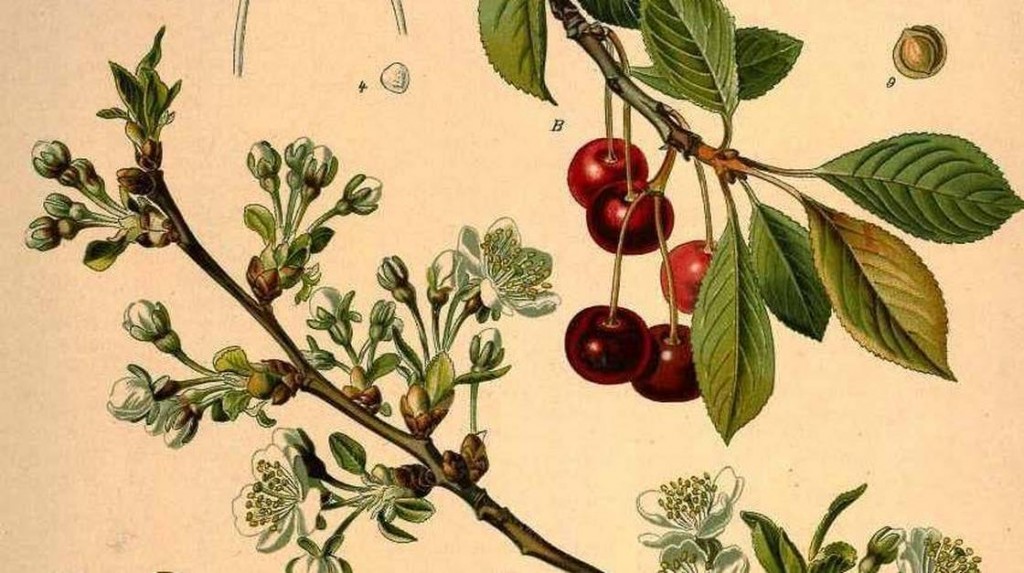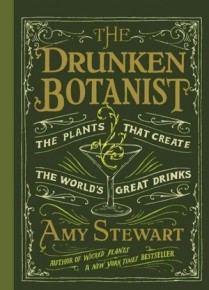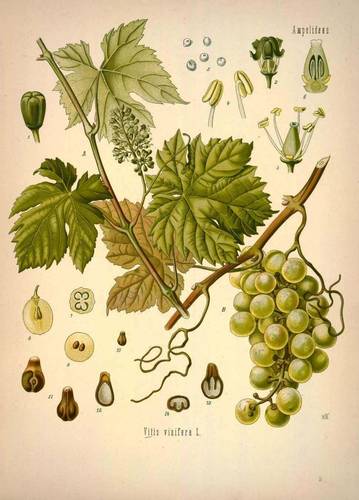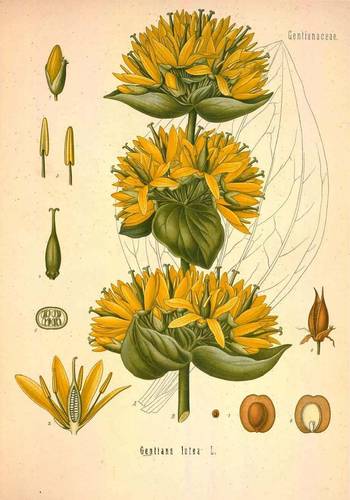Listen to the Story on Morning Edition
'Drunken Botanist' Takes A Garden Tour Of The Liquor Cabinet
'Drunken Botanist' Takes A Garden Tour Of The Liquor Cabinet
Post by Camila Domonoske, The Salt at NPR Food (3/19/13)

 The next time you're sipping on a glass of something boozy, consider the plants behind your beverage. Some of them might spring immediately to mind: grapes in your wineglass, rye in your whiskey bottle, juniper in your gin and tonic. But what about sorghum and coriander? Cinchona and bitter orange?
The next time you're sipping on a glass of something boozy, consider the plants behind your beverage. Some of them might spring immediately to mind: grapes in your wineglass, rye in your whiskey bottle, juniper in your gin and tonic. But what about sorghum and coriander? Cinchona and bitter orange?
An incredible diversity of grains, herbs and fruits goes into the world's alcoholic drinks, which means that for the botanically minded, a trip to the liquor store is a little different than it is for the rest of us. Amy Stewart explains what it's like in her new book, The Drunken Botanist. She once stopped by a liquor store with some fellow gardeners and got a little distracted, she writes:
"There wasn't a bottle in the store that we couldn't assign a genus and species to. Bourbon? Zea mays, an overgrown grass. Absinthe? Artemisia absinthium, a much-misunderstood Mediterranean herb. Polish vodka? Solanum tuberosum ... Suddenly we weren't in a liquor store anymore. We were in a fantastical greenhouse, the world's most exotic botanical garden, the sort of strange and overgrown conservatory we only encounter in our dreams."
As Stewart explains to NPR's Renee Montagne, that trip led straight to the writing of The Drunken Botanist. "I was talking about [how] we, as gardeners, should be more interested in this stuff. I mean, look at a bottle of gin. There's nothing in that bottle that isn't a plant. And the evening wears on, and I finally said, 'Somebody ought to write a book about this!' And all my friends said, 'Yeah, why don't you do it? You're the one who can't shut up about it!'"

So she did, writing a book that makes familiar drinks seem new again. Stewart describes beer by way of the challenges of wheat fermentation, and her discussion of gin starts with how to pick juniper berries. Through this horticultural lens, a mixed drink becomes a cornucopia of plants: A Manhattan may contain just three ingredients and a garnish, but Stewart says that a single glass holds over 20 plants.
"You can start with the whiskey, which would contain barley, rye and wheat or corn. And of course it's been soaked in an oak barrel, so let's not forget that that's another plant, the oak tree, that has a huge role in cocktails," she explains. "And then you add sweet vermouth, which is a wine base — so there's your grapes — and then vermouth has a lot of spices and herbs. And then you splash on some Angostura bitters, and Angostura bitters have, oddly enough, not Angostura bark, but has a lot of other roots and seeds. And the final ingredient in a Manhattan is, of course, a cherry, and so there's one more plant."

The Drunken Botanist is organized by ingredient, with entries for plants both common (barley is found in beer, vodka and whiskey) and unusual (violet liqueurs aren't exactly a liquor cabinet staple). But Stewart argues that some odd-sounding plants are actually surprisingly common — like sorghum, for example. It's not a familiar grain for most Americans, but elsewhere in the world it's an alcohol staple.
"It's grown across Africa and used to make this homemade beer, this cloudy, opaque beer," Stewart says. "It's also grown across Asia, and particularly in China, where it's used to make mao-tai. ... I think that sorghum might actually be the plan that turns up in more alcohol around the world than any other, believe it or not."

In addition to featuring cocktail recipes, Stewart includes growing information for many of the ingredients she describes. Some plants, like barley, are not for the faint of heart, but others are beginner-friendly: Stewart recommends that home mixologist-gardeners check out the Mexican sour gherkin cucumber.
"It's not technically a cucumber, but it's very closely related," she explains. "The fruits are the size of a grape and they're green with little white markings, so they actually look like miniature watermelons. And they taste great: They're sort of a little more tart than a regular cucumber, but they just look extraordinary."
And the best part, for those of us who lack Stewart's green thumb? "The vines happen to be very prolific, so you do not have to be a very good gardener."
As someone who has managed to underwater a cactus, I'll drink to that.
Copyright 2013 NPR.
